Jade sculpture isn’t just a fancy rock—it’s a timeless treasure that’s captivated artists and collectors for centuries. From ancient dynasties to modern artisans, this stunning green gem has been carved into extraordinary pieces that tell stories of culture, spirituality, and craftsmanship. If you think jade is just for your grandma’s jewelry box, think again!
Imagine owning a piece of history that not only beautifies your space but also elevates your status to “art connoisseur.” Whether it’s a delicate dragon or a serene Buddha, each jade sculpture carries a unique charm that can spark conversations and perhaps a bit of envy among friends. Dive into the enchanting world of jade sculpture and discover why this ancient art form deserves a spot in your heart—and your home.
Jade Sculpture
Jade sculpture represents a rich artistic tradition, showcasing intricate craftsmanship and deep cultural roots. Originating primarily in East Asia, jade has served as a medium for artisans for thousands of years. Artists utilize jade’s unique qualities to create detailed figures, ornaments, and symbolic representations.
Jade is classified into two main varieties: jadeite and nephrite. Jadeite typically exhibits a wider range of colors, while nephrite showcases a more subtle palette. Both types hold significant value in various cultures, particularly in China, where jade symbolizes purity, integrity, and immortality.
Throughout history, jade sculptures have been associated with royalty and spirituality. They often feature themes from mythology, nature, and daily life, reflecting the beliefs and values of the cultures that shaped them.
Collectors highly prize jade sculptures for both their aesthetic appeal and historical significance. Market prices can vary drastically based on craftsmanship, size, and quality of jade, with exceptional pieces fetching astronomical sums at auctions.
Signature works often depict animals like dragons and phoenixes, which carry deep meanings in Asian culture. These sculptures enhance interior spaces, serving as focal points that invite admiration and conversation.
In contemporary art, jade continues to inspire innovation. Modern artists blend traditional techniques with fresh concepts, broadening the scope of jade sculpture beyond conventional designs.
Ultimately, jade sculptures embody a unique fusion of art and tradition, making them invaluable to collectors, historians, and art enthusiasts alike.
Historical Significance of Jade Sculpture

Jade sculpture holds a significant place in various cultures throughout history. Its origins trace back to ancient civilizations, where it served not only as a medium for artistic expression but also as a symbol of power and spirituality.
Ancient Civilizations and Jade
Ancient cultures highly valued jade for its durability and beauty. In China, jade use dates back over 5,000 years, emerging as a preferred material for burial objects and ceremonial artifacts. The Olmec and Maya civilizations in Mesoamerica also carved jade into intricate items, often associating them with rituals. Sculptures from these periods reveal a connection to the spiritual realm, where jade was believed to possess protective qualities.
Cultural Symbolism in Jade Sculpture
Jade symbolizes purity, integrity, and longevity in various cultures. In Chinese tradition, it represents moral virtues and immortality, often appearing in magnitude during important ceremonies. Animals carved from jade, such as dragons and phoenixes, reflect not only aesthetic beauty but also deeper meanings related to strength and rebirth. The presence of jade sculptures in religious contexts underscores their role as conduits of divinity and protection. Collectors appreciate these pieces for their cultural significance as much as their visual allure.
Techniques Used in Jade Sculpture
Jade sculpture involves various intricate techniques that contribute to its distinct beauty and cultural significance.
Carving Methods
Carving methods in jade sculpture vary widely, reflecting the artist’s skill and vision. Traditional techniques utilize handheld tools such as chisels and rotary tools to achieve intricate details. Skilled artisans also employ techniques like high-speed polishing to shape the jade without damaging its structure. In addition to shaping, different styles emerge based on cultural influences, showcasing themes ranging from nature to mythology. Finely honed tools enable artists to create lifelike forms, ensuring that each piece encapsulates its intended meaning. Furthermore, modern artists often blend traditional methods with contemporary innovations, expanding the creative possibilities inherent in jade.
Polishing and Finishing Processes
Polishing and finishing processes play a crucial role in enhancing the final appearance of jade sculptures. Artisans utilize soft cloths and varying grades of abrasives to smooth the surface and highlight the stone’s natural luster. Multiple polishing stages ensure that every sculpture achieves a reflective quality that accentuates its color variations. The finishing touches may include applying natural wax to enhance durability and sheen. Each step in this process requires careful attention to detail, ensuring that the sculpture maintains its integrity while presenting an elegant finish. Ultimately, these processes underscore the craftsmanship involved and elevate jade sculptures to their status as treasured art pieces.
Notable Jade Sculptors and Their Works
Jade sculpture showcases immense talent across various eras and styles. Several artists stand out for their remarkable contributions to the art form.
Contemporary Artists
Contemporary jade artists blend traditional craftsmanship with innovative ideas. Artists like Liu Jianhua often create pieces that challenge conventions while honoring ancient techniques. His work, infused with modern themes, pushes boundaries in design. Xu Jiang’s creations exhibit a mix of color and texture, reflecting a dynamic interpretation of jade. Both of these artists represent a shift toward conceptual sculptures, inviting viewers to engage in dialogue about culture and identity. Their unique approaches breathe new life into jade, captivating today’s audiences.
Historical Masters
Historical jade sculptors set foundational techniques still revered today. In ancient China, craftsmen like He Huan play a pivotal role in developing intricate designs that depict dragons and phoenixes. These symbols carry deep cultural meanings, representing strength and prosperity. The Olmec civilization also contributed significantly, crafting ritualistic jade items that highlight spirituality. Their skillful work reveals a commitment to both artistry and cultural heritage. The legacies of these masters continue to influence contemporary sculptors, underscoring the enduring allure of jade art through history.
Collecting and Caring for Jade Sculpture
Collectors of jade sculptures appreciate the blend of artistry and culture in each piece. Understanding both authenticity and maintenance is vital for preserving these treasures.
Authenticity and Appraisal
Determining authenticity starts with examining the piece’s origin. Reputable dealers provide documentation that proves the sculpture is genuine jadeite or nephrite. Evaluating the craftsmanship enhances the appraisal process; intricate designs and fine finishes signify skilled artistry. Engaging a certified appraiser is essential; professionals apply their expertise to assess value accurately. Major auction houses often feature jade sculptures, serving as a reliable marketplace for collectors. Keeping appraisals updated with current market trends ensures informed decisions when buying or selling.
Maintenance and Preservation Tips
Caring for jade sculptures involves simple yet effective practices. Regular dusting with a soft, dry cloth prevents buildup without scratching the surface. Avoid exposure to harsh chemicals, which may damage the stone’s finish. Storing sculptures in a stable environment, away from direct sunlight and extreme temperatures, preserves their appearance. Using soft pads underneath can protect sculpted bases from scratches. Additionally, periodic professional cleaning maintains their luster. Practicing these maintenance tips allows collectors to appreciate their jade sculptures for years to come.
Jade sculpture stands as a remarkable testament to the intersection of art and culture. Its enduring appeal lies not only in its aesthetic beauty but also in the rich history and symbolism it embodies. As contemporary artists continue to innovate within this ancient tradition, jade sculptures remain vibrant expressions of identity and creativity.
Collectors and enthusiasts alike can find immense value in understanding the intricacies of these pieces. By appreciating their cultural significance and maintaining their beauty, one can truly honor the legacy of jade sculpture. Whether as a conversation starter or a cherished heirloom, jade sculptures offer a unique glimpse into the artistry and spirituality that have captivated generations.

